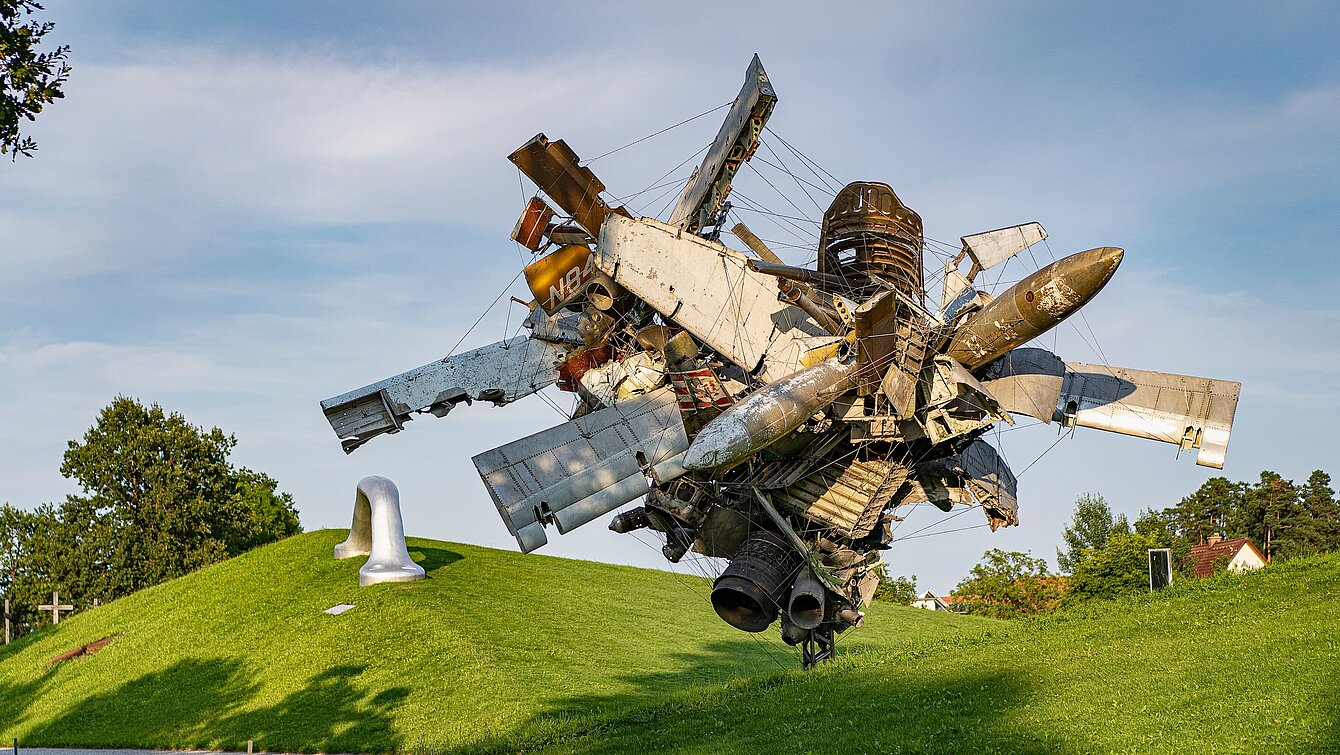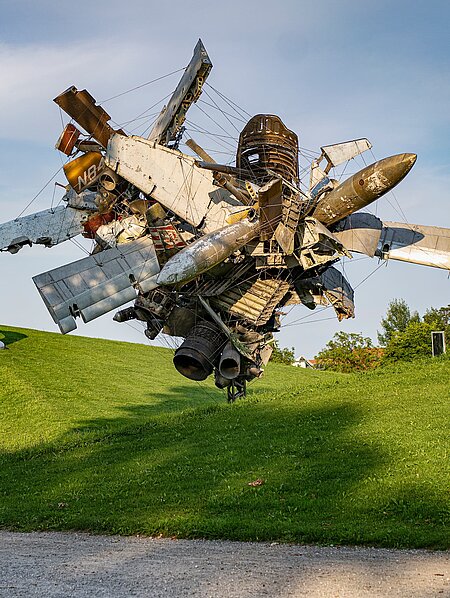Nancy Rubins condenses electrical devices, scrap metal or, as here, aircraft parts into monumental sculptures. These parts refer to their original purpose while also highlighting the effects of consumption and industrial production machinery. Rubins has been using aeroplane parts in her works since the late 1980s, long before the events of 09/11. When this particular sculpture was created in 2003, the association with the terror attacks on the Twin Towers in New York was inevitable. Airplane Parts & Hills looks like a frozen disaster, while at the same time displaying a unique beauty in the rearrangement of the parts.
Airplane Parts & Hills
Nancy Rubins, 2003


Image Credits
Author
Elisabeth Fiedler
Location on map
Position 43
Owner
Österreichischer Skulpturenpark Privatstiftung
Artist biography
Nancy Rubins
Show all
About the sculpture
Rubins condenses electrical devices, boilers, camping vans or aircraft parts she finds at refuse sites to make monumental sculptures. In these, individual components, which are compressed as tightly as possible, have self-referential character on the one hand, whilst on the other referring to the effects of consumerism and industrial MFG machinery.
Whereas in Pop Art objects of everyday use in the brilliant aesthetics of availability were given the status of Art, now Nancy Rubins takes disused objects oscillating between being rejected as useless rubbish and fascinating due to their history, and makes them into new fetish objects. The cultures of dumping things on the one hand and bringing them into the museum on the other confront each other in these works – like forgotten and apotheosised objects.
Here, Rubins destabilises the individual parts and our usual perception to make them become sculptures. Similar to a shower of only slightly differing information, pretending comprehensive knowledge and yet only causing total chaos, the elements of Rubin’s sculpture culminate in a kind of “maximum credible accident”, unavoidably confronting the beholder. The objects evoke timelessness without function – paralysed - culminating in collapse.
The sculpture shows its visionary character in the fact that Rubins had used the same material, i.e. parts of wrecked aircraft as early as at the end of the 1980s, a long time before 9/11. The depressing topicality of this new construction, the aesthetics of which is placed between a futurist flush of speed, frozen disaster and the beauty of the bundled new arrangement, convey an additional meaning, thanks to the real catastrophe.
Similar to an archaeological find from the world of fiction, a scenario becomes evident, which transfers unresolved questions of the present into an undetermined future.



















